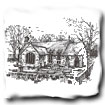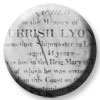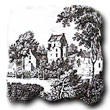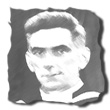The Deskford Carnyx
The area of lower Deskford is rich in Pictish remains and was obviously highly regarded as a place to live in, as indeed it remains so today.
On viewing the archaeological remnants we find that there was a religious and legal centre at Blairhillock in the form of a classic motte and nearby structure (now removed) named The Law Hillock.
On the hills above we find Fort structures and an abundance of barrows or burial grounds. Silver hoards and Roman coins have been discovered but the jewel in the crown was unearthed by a ditch digger in 1816 whilst working in the vicinity of Leitchestown Farm. He found a badly corroded lump of metal which turned out to be the rarest of all! THE CARNYX.
Although the Carnyx was badly broken and corroded the conservators at the Scottish National Museum have painstakingly restored it and also have made full scale replicas which have subsequently been played.
The Carnyx takes the form of a stylised boars head complete with a flappable (is that a word?) wooden tongue, all of which is supported on a seven foot long trumpet.
This was obviously a very special object and was probably used in religious processions or indeed to lead the Pictish army as in our time do the bagpipes. From alalysis of the metals its age is somewhere between 80 A.D and 300 A.D.
The Deskford Carnyx is the only surviving one in Britain but similar trumpets have been found in Denmark and northern Europe and are often found in Celtic art as in the Gundestrup Cauldron.
The question must be asked. How did this beautiful work of art end up broken and crushed in a Deskford peat bog? Waiting to be found by a ditch digger in 1816.
Perhaps the answer lies in the writings of Tacitus the Roman historian and in particular his description of the battle of Mons Graupius which some believe was fought in Banffshire then perhaps escaping Picts may have buried the remnants of their sacred trumpet in a known site with a view of recovery in a future which never came for them. Alternatively it may have been buried as votive offering.
The original is now on view at the Scottish National Museum in Chambers Street, Edinburgh and a replica Is to be found in the Banff Museum
Tom Johnston







